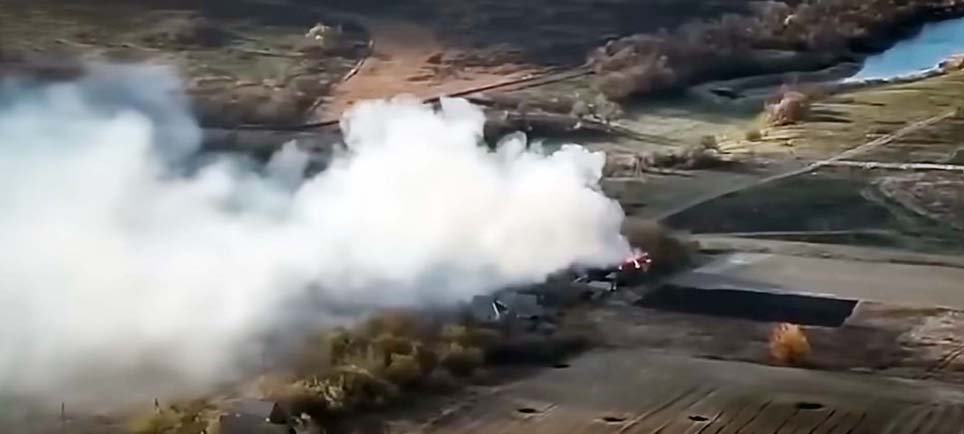Allegedly breaching Ukrainian air defenses in a terrifying display of accuracy and strategy, a Russian drone observed over an air base before choosing a MiG-29 fighter jet for destruction. The drone’s activities resulted in a ballistic missile strike that completely destroyed the aircraft, therefore indicating a concerning change in contemporary military strategies.
Incident Facts
Reports from The Kyiv Post and BBC state that the drone passed over Ukrainian territory undetectably, lingering over a major airbase. Using sophisticated targeting technologies, it found the MiG-29, pillar of Ukraine’s air fleet. Not too long later, a ballistic missile strike destroyed the jet and left wreckage all around the facility.
Apart from a major loss for Ukraine’s already limited aviation capacity, this focused attack begs questions regarding the efficacy of present defensive actions against advanced Russian drones and missiles.
Escalation and Technological Superiority
Experts have observed Russia’s rising use of unmanned aerial vehicles (UAVs) in order to acquire tactical supremacy. These drones, outfitted with reconnaissance and strike capabilities, enable for real-time data transfer and accurate targeting.
A military analyst interviewed by Al Jazeera stressed, “This marks a dangerous evolution in the conflict, where traditional air defense systems struggle to counter autonomous and coordinated drone incursions.”
Considered for its adaptability and speed, the MiG-29 is indispensable for protecting Ukrainian airspace. Losing such a high-value asset is a setback to Ukraine’s operational readiness.
Impact on Civilians and Soldiers
The attack echoed beyond the battlefield, significantly affecting local populations. Explosions from the strike were allegedly audible miles away, leaving people terrified.
Kateryna, a nearby resident, recounted her anxieties in an interview with Radio Free Europe/Radio Liberty: “We observed the smoke rising from the base. It’s terrible to think anything like this could happen so close to us. It feels like we’re not secure anywhere longer.”
Ukrainian soldiers stationed at the site shared their tales, underlining the psychological toll of such precision bombings. “You feel helpless when these drones fly above. You can’t see them, but you know they’re watching,” one soldier claimed.
Global Implications and Reactions
The strike has increased international concerns about the escalation of the conflict and the role of technology in modern warfare. Ukrainian officials have reiterated appeals for modern air defense systems from Western partners, including more Patriot and Iron Dome units to offset Russia’s powerful UAVs and hypersonic missiles.
President Volodymyr Zelensky made a statement, encouraging the world community to understand the significance of such assaults. “These are not isolated incidents—they are systematic attempts to destabilize our defense infrastructure and intimidate our people.”
Meanwhile, Russia defended its actions, arguing the strike was a necessary response to Ukrainian provocations. However, foreign observers, including some at the United Nations, have characterized the attack as an escalation of violence.
Strategic Lessons and Future Outlook
The tragedy emphasizes the urgent need for innovation in air defense tactics. As drones become more vital to military operations, existing defense systems must change to detect and eliminate these threats efficiently.
Beyond the immediate military ramifications, the attack serves as a reminder of the human cost of war. As precision strikes become more regular, civilians and troops alike confront heightened hazards, erasing the barrier between the combat lines and home fronts.
Summary
The destruction of the MiG-29 is more than a tactical setback for Ukraine—it is a sobering reminder of the shifting character of warfare. As both sides adapt to the needs of modern conflict, the world watches with increased anxiety, realizing the tenuous balance between scientific innovation and humanitarian consequences.
Sources
- Kyiv Post – Detailed analysis of the strike and its implications.
- BBC – Coverage of Russian drone activities and Ukraine’s air defense challenges.
- Al Jazeera – Expert commentary on the technological aspects of the conflict.
- Radio Free Europe/Radio Liberty – Emotional accounts from Ukrainian civilians and soldiers.

